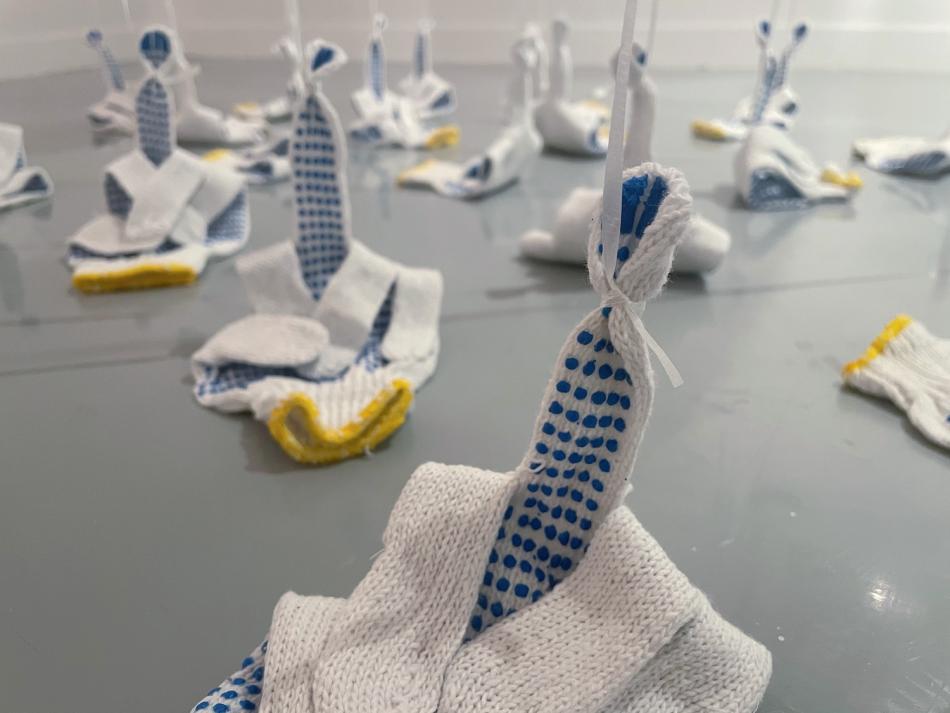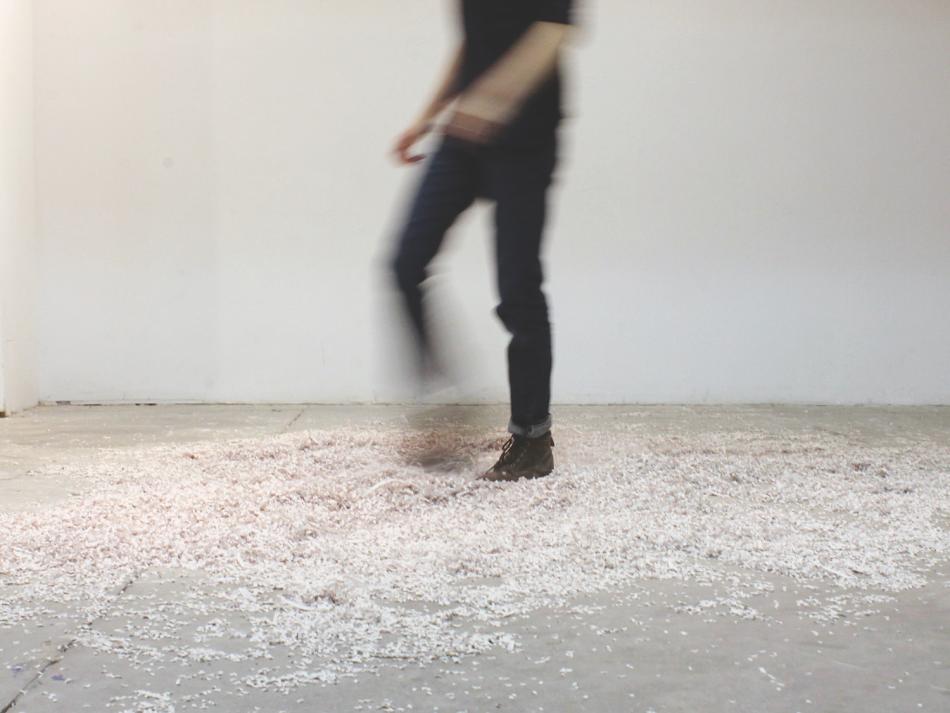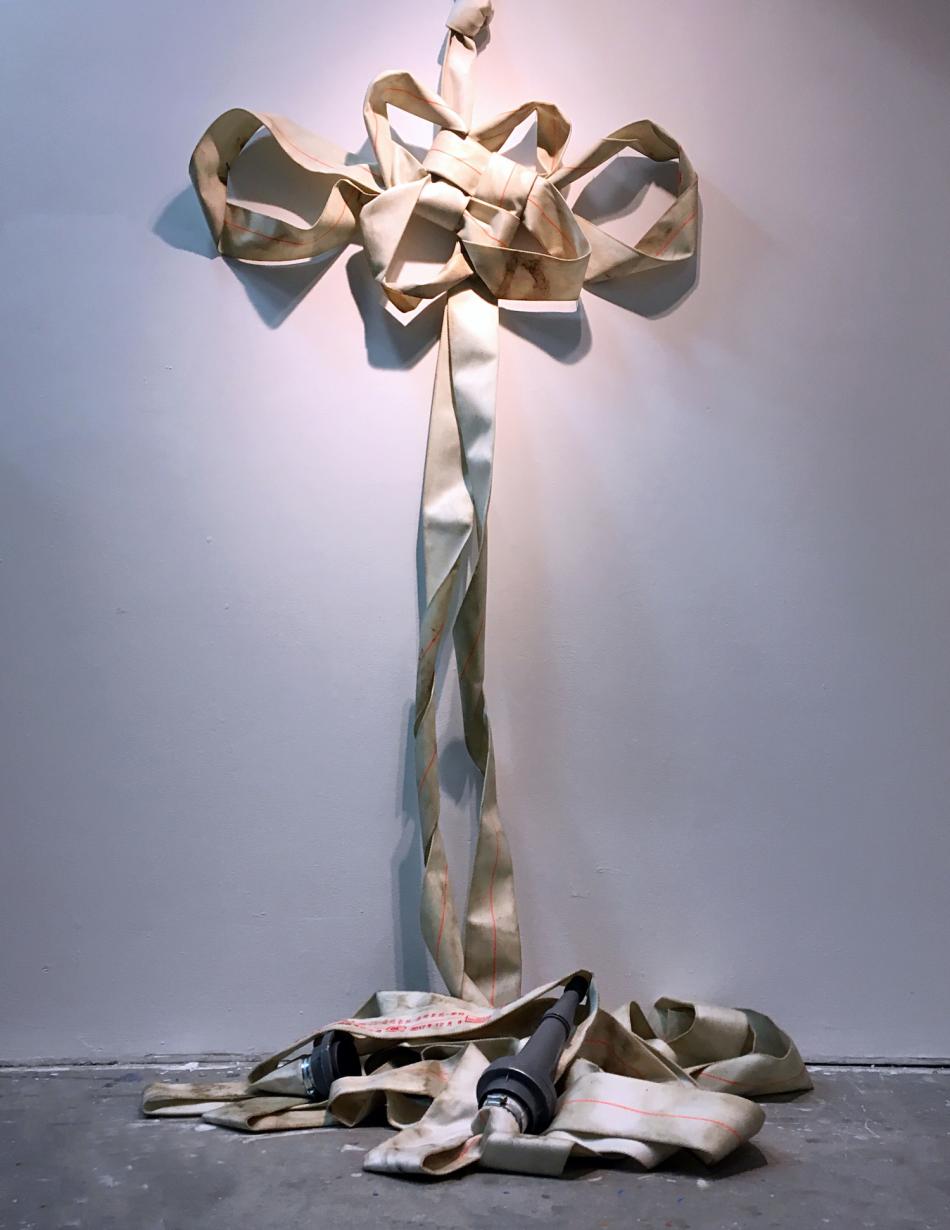Sometimes Guilty, Always Responsible
Anran Guo
- / James Gallery
Opening Reception: Saturday, March 25 from 2:00-4:00pm
A piece of blank paper symbolizes a protest movement across China in 2022. A fire triggered the movement during enforced COVID quarantine, the gates were locked from the outside, and residents could not escape from the building.
Years of research and advocation in fighting against censorship, living as an immigrant across the sea, guilt, fear, resistance and exhaustion are like small bones in the throat. Selected works old and new by Anran Guo, Sometimes Guilty, Always Responsible develops social critique and self-critique; questions the privileges and responsibilities of individuals when confronting social-political issues from the aspect of censorship and self-censorship.
“There was definitely nothing on the paper, but we know what’s on there.”
Who is Responsible? Reflection on “Sometimes Guilty, Always Responsible”
By Gladys Lou
As one enters Hamilton Artist Inc., they are immediately greeted by a herd of colourful balloons floating in the space. I was seduced by the warm welcome until I noticed that the ends of the balloons are tied to the fingertips of the gloves on the ground, pointing their middle fingers at visitors. The solo exhibition Sometimes Guilty, Always Responsible featured the work of Anran Guo, a Chinese artist based in Hamilton. Guo’s practice utilizes the mediums of sculpture and installation to subvert the meaning of readymade, everyday objects, reconfiguring them to offer potent critiques of censorship and fear in contemporary society.
Guo explains that the exhibition title is a play with words. “I didn’t say who is guilty, who is responsible,” she makes clear. Instead, Guo believes that every person, including herself, is accountable for social and political issues that affect our daily lives both locally and globally. Shaped by her family and cultural roots, Guo’s understanding of social responsibility is deeply rooted in Confucianism, an ancient Chinese belief system that emphasizes personal ethics, cultivation of virtue, and social harmony. For instance, Guo’s installation Stop Fighting (2021), that features an army of balloons tied to industrial gloves, presents a dilemma to viewers: when faced with the dissonance between expectation and reality, should one accept the situation as it is or resist? The brightly coloured helium balloons serve as symbols of hopes and imagination – they conjure memories of childhood and celebration. However, as one grows up, their utopian view of the world gradually fades away. Similarly, Guo’s balloons deflate over time, drawing a parallel to this process of realization and disillusion. As the balloons sink to the ground, the middle fingers of the gloves flatten – a metaphor for giving up and leaving one’s fortune in the hands of fate. The tension of the strings, stretched and pulled between the light helium gas and the weight of gravity, serve as a metaphor for the yearning to let go and fly away, counteracted by the obligation to stay grounded. The industrial gloves, symbols of working-class labour, allude to the invisible power dynamics at play in society. Guo’s work documents a person’s lifetime in the lifespan of inflated balloons. The work captures the struggle for balance between duty and freedom, questioning what is left in life when one’s initial spark of passion fades away.
Mounted on the wall on the opposite end of the gallery is THE KNOT (2018), a monumental Chinese knot made from a fire hose. The Chinese knot is a traditional symbol of good luck and blessings. The hose used in the work was manufactured in approximately the same time when a fire broke out in Beijing, leading to a mass eviction of migrant workers from the country. Guo, a student at Sheridan College at that time, sourced the fire hose from China and dragged it across the Oakville campus to create the weathered texture on the surface. She made this work to send her blessings from across the seas, showing support to those living in crisis due to the incident. Against the next wall sits Shh (2018), an installation made from a stack of shredded newspaper piling up along one side of the gallery. The words and images on the paper fragments are no longer readable or identifiable. A gesture for silence and an onomatopoeia for the sound of shredding paper, the work depicts how information is withheld and distorted from its original meaning through the act of destruction and displacement. Referencing Felix Gonzalez-Torres’s “Untitled” (Portrait of Ross in L.A.), which consists of 175 pounds of commercially distributed candy, Guo’s paper iteration of the classic piece invites visitors to jump on it, sweep it around, and shred it further. As the slices of paper migrate across the gallery space, the configuration of the work morph and evolve with no defined start or end points, just like the overarching sociopolitical debates that loom over visitors’ everyday lives.
Featuring a selection of Guo’s conceptual work, Sometimes Guilty, Always Responsible conveys heavy political messages in playful, tangible language. The exhibition opens up conversations on social responsibility and personal freedom, prompting viewers to consider their roles as community members and global citizens.
Bibliography:
Gonzalez-Torres, Felix. “Untitled” (Portrait of Ross in L.A.), 1991, Candies in variously colored wrappers, endless supply, Dimensions vary with installation; ideal weight 175 lbs., Chicago, Art Institute of Chicago.
About the artist:
Anran Guo is a queer female artist currently based in Hamilton. She grew up in China and immigrated to Canada in 2020. Guo holds a Master of Visual Studies in Studio Art, an HBA in Art and Art History (jointly with Sheridan College), and a Certificate in Curatorial Studies from the University of Toronto. Guo is primarily focused on sculptures and installations. Her works are metaphorical and playful, offer layered readings in critiques of social and political systems. Guo’s works highlight simple or everyday objects with minimum intervention, create low-barrier conversations, and call upon the viewers to question invisible power dynamics in society. Guo’s works have been exhibited across the GTA, and collected by Sheridan College.


